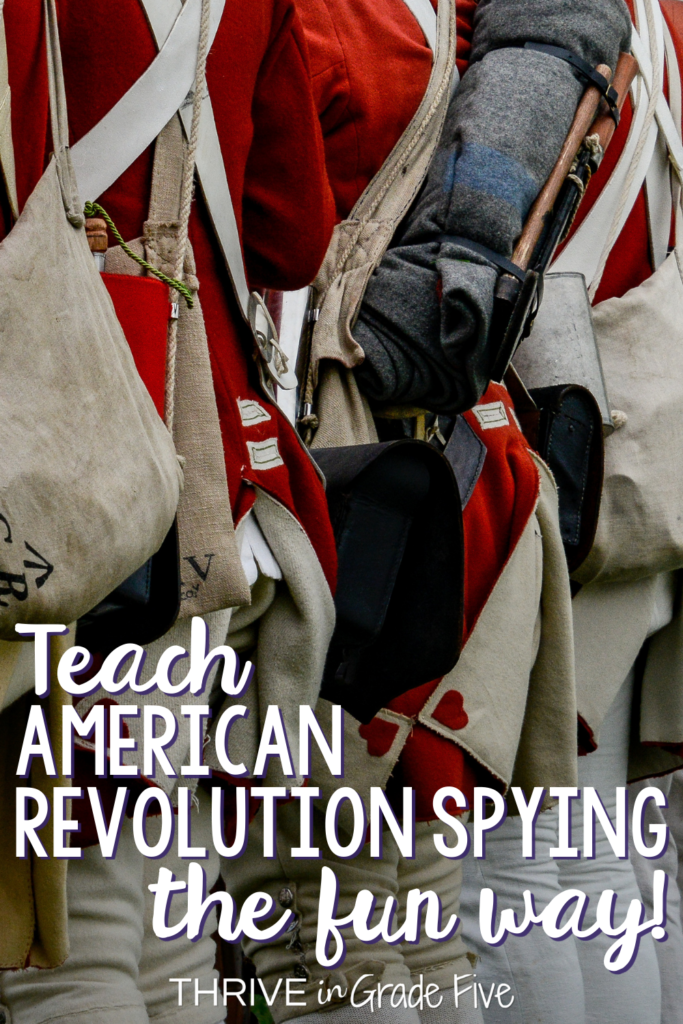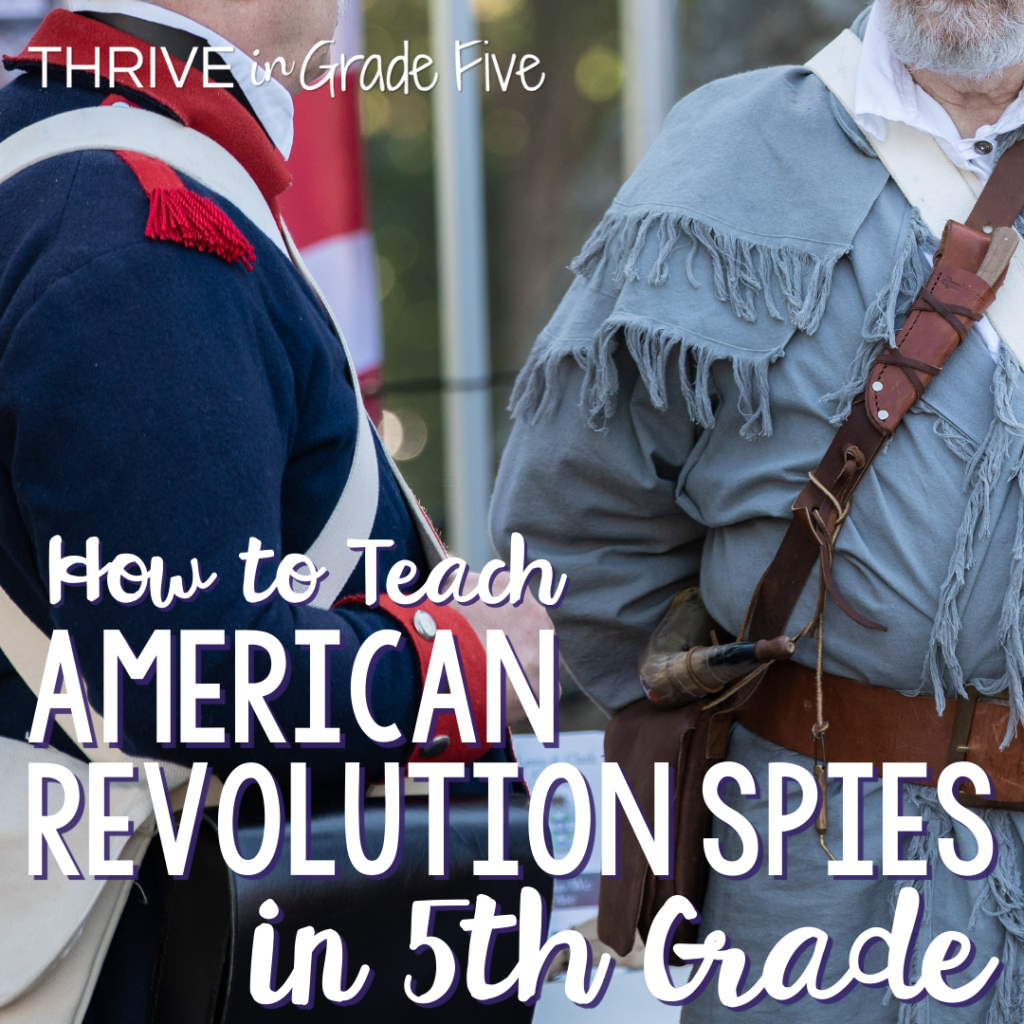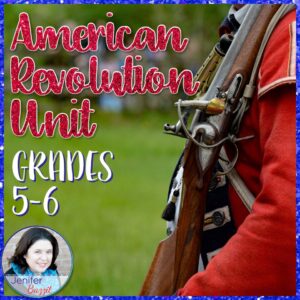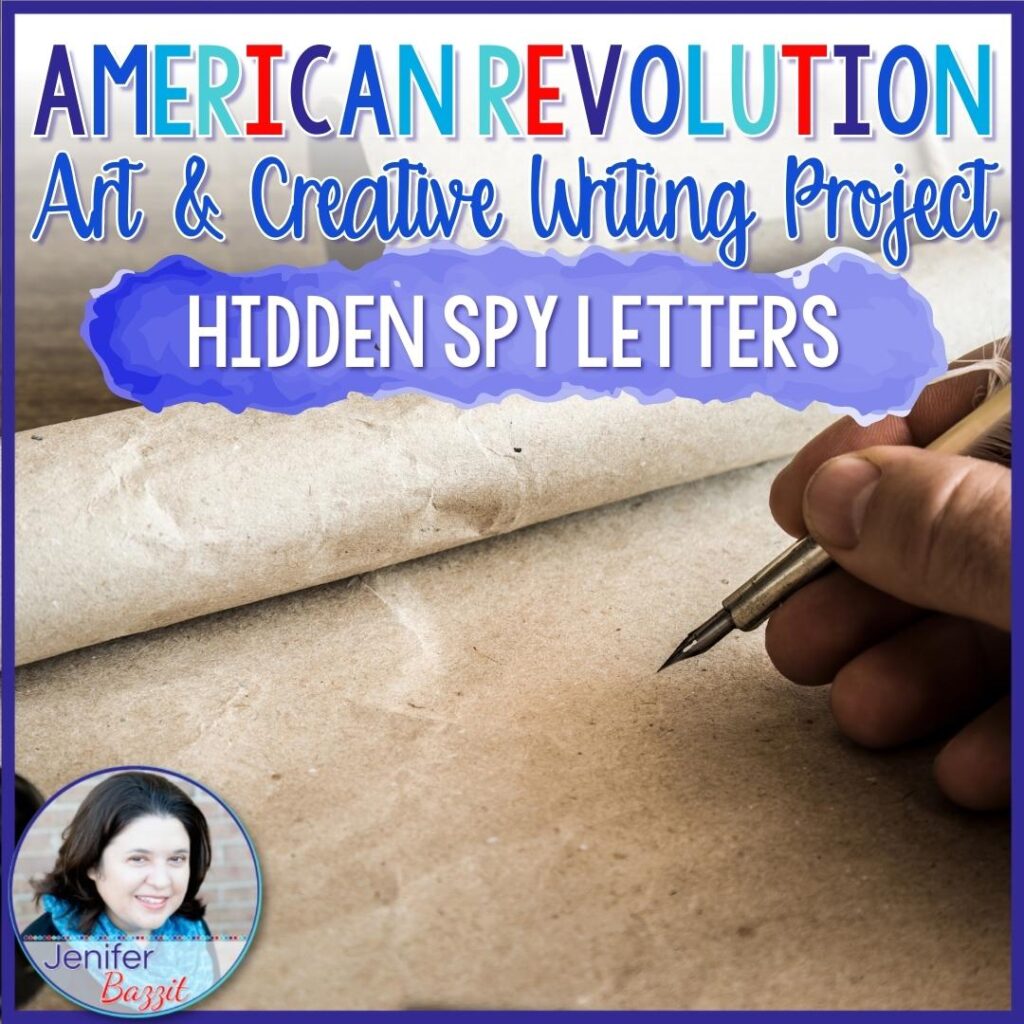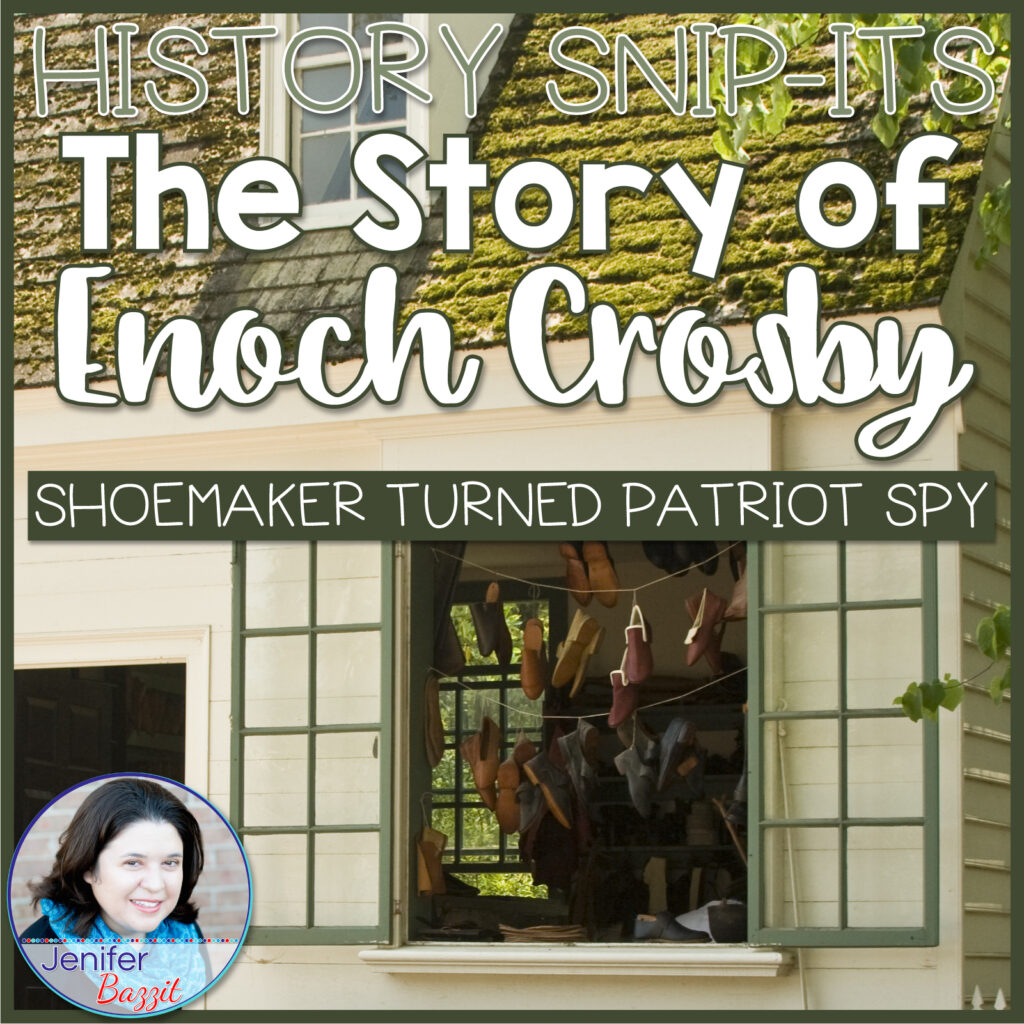If you’ve been looking for ideas on how to teach American Revolution spies in 5th grade, you’ve come to the right place!
When you teach the American Revolution, you’ll definitely want to include a lesson (or two) about spies.
If your 5th graders are anything like mine, they think spies and spy techniques are absolutely fascinating.
They’re right! Learning about spies and spy techniques is one of the highlights of any American Revolution unit.
Spy networks were an invaluable asset to the Continental Army. Without spying, the Revolutionary effort may very well have been doomed.
Before we dive in, I’d love for you to grab this free pack of American Revolution Cloze Passages. Enter your first name and email address to have them sent to you immediately. You’ll also become a member of my VIP email club just for upper elementary social studies teachers!

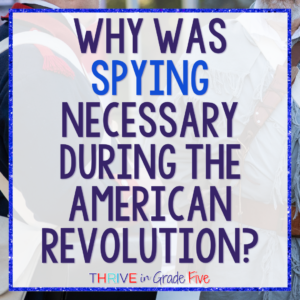
Why was spying necessary during the American Revolution?
The American Revolution was not really a fair fight.
In the 18th Century, the British Army was the greatest fighting force in the world.
They had plenty of food, training, weapons, ammunition, shoes, and everything else they needed.
The Continental Army, on the other hand, was underfunded, undersupplied, and lacked training.
To make up for what the patriot army lacked, spying became an absolute necessity.
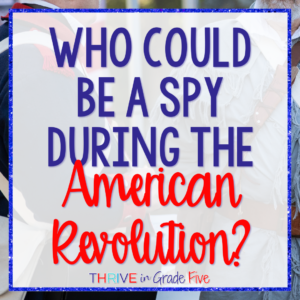
Who could be a spy during the American Revolution?
Anyone could serve as a spy during the American Revolution.
Women and children were often successful spies because the British did not suspect that they were capable of spying.
During the 18th Century, the act of spying was viewed as dirty and distasteful, so anyone who didn’t “fit the profile” of a spy was usually able to listen in and pass on information undetected.
Students are surprised to find out that children sometimes participated in spying. My very favorite American Revolution children’s book and STEM activity shows students one way that children were able to contribute to the gathering of intelligence and passing of information during the Revolution.
Civilians were found to be the best spies because they could escape suspicion. After all, who would suspect a tailor, shoemaker, child, or old lady of spying?
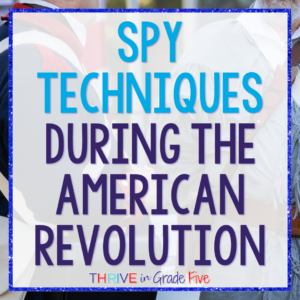
Spy Techniques During the American Revolution
Spies gathered intelligence and passed messages using many different techniques.
They certainly had to be creative and think outside of the box to escape suspicion.
Code Letters
As a kid, did you ever write a message using a code? The message could only be deciphered using the code.
This is exactly how some messages were passed during the American Revolution.
Code letters and their corresponding keys would be moved separately to ensure that an intercepted letter would not be useable by the enemy.
Check out this primary source example of a letter from Benedict Arnold to John Andre written in 1780 from the University of Michigan library.
Invisible Ink Letters
Playing with invisible ink today is fun for kids, but this was a solid way to pass secret information for Revolutionary War spies.
Spies often wrote regular, innocent-looking letters with regular ink and placed messages in invisible ink between the lines.
This primary source letter example from the University of Michigan shows invisible ink in action.
Mask Letters
Mask letters are so much fun to use with students.
First, students create their masks and place them on a paper.
Second, they’ll write the secret message on the paper below the mask.
Finally, they’ll remove the mask and write a message “around” the secret message to make it look like an innocent letter.
Just like code letters, letters were passed separately from the masks needed to read the message to ensure the message wouldn’t be intercepted by the enemy.
Check out this primary source example of a mask letter from the University of Michigan library.
Clothesline Codes
Sending messages using everyday items, like clothing drying on a clothesline, was an ingenious way to pass messages.
Clothesline codes could be used in broad daylight and in plain sight of the British Army.
I highly recommend using this book and social studies/STEM combination activity with students. They LOVE it!
Mail was even used to the advantage of spies. Letters were passed from town to town on horseback and there was no security to speak of.
Washington was known to pass incorrect information through the mail when it would be likely that the British would intercept his letters.
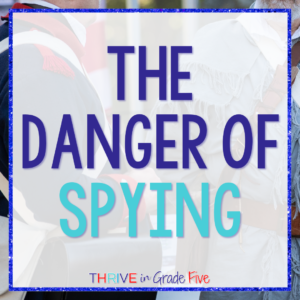
The Danger of Spying
The penalty for spying was execution.
Both the British and the Continental Army executed spies.
One of the most known cases of espionage and sabotage against the Continental Army involved Benedict Arnold and Major John Andre.
Major Andre was executed, but Benedict Arnold escaped.
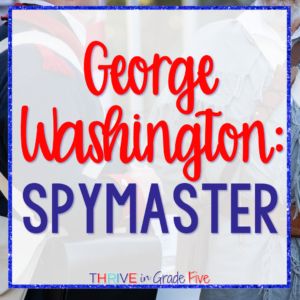
George Washington: Spymaster
Before he was our beloved first president, George Washington was the Commander in Chief of the Continental Army.
He was convinced that the Revolution could not be won strictly through military maneuvers and skill.
To increase the Continental Army’s chances of success, he created an organized spy network.
Because spying was an incredibly dangerous undertaking, Washington chose to keep the identities of most spies anonymous.
One fantastic example of this is the Culper Spy Ring.
I show my students the primary source page below because it brings to life the careful anoynmity that was maintained among spies.
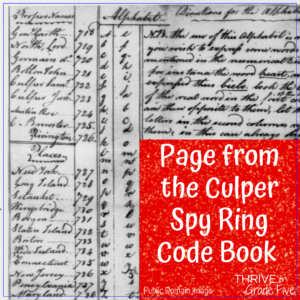
The left side contains people, places, and the codes that represent them.
The Culper Spy Ring is an amazing example of the careful planning and procedures involved in Revolutionary Era spying.
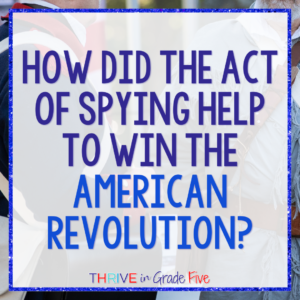
How did the act of spying help to win the American Revolution?
It’s been said that the woefully unprepared, ragtag Continental Army won the American Revolution because they “out spied” the British.
I think it was the combination of successful spying and the leadership of George Washington that won the American Revolution.
Before you go, I’d love for you to grab this free pack of American Revolution Cloze Passages. Enter your first name and email address to have them sent to you immediately. You’ll also become a member of my VIP email club just for upper elementary social studies teachers!

Here are four resources that may interest you:
